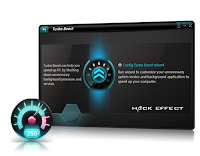In cryptanalysis and computer security, a dictionary attack is a technique for defeating a cipher or authentication mechanism by trying to determine its decryption key or pass phrase by searching likely possibilities.
Click here for more updates!Technique.
A dictionary attack uses a targeted technique of successively trying all the words in an exhaustive list called a dictionary (from a pre-arranged list of values). In contrast with a brute force attack, where a large proportion key space is searched systematically, a dictionary attack tries only those possibilities which are most likely to succeed, typically derived from a list of words for example a dictionary (hence the phrase dictionary attack) or a bible etc. Generally, dictionary attacks succeed because many people have a tendency to choose passwords which are short (7 characters or fewer), single words found in dictionaries or simple, easily-predicted variations on words, such as appending a digit.
Pre-computed dictionary attack
It is possible to achieve a time-space tradeoff by pre-computing a list of hashes of dictionary words, and storing these in a database using the hash as the key. This requires a considerable amount of preparation time, but allows the actual attack to be executed faster. The storage requirements for the pre-computed tables were once a major cost, but are less of an issue today because of the low cost of disk storage. Pre-computed dictionary attacks are particularly effective when a large number of passwords are to be cracked. The pre-computed dictionary need only be generated once, and when it is completed, password hashes can be looked up almost instantly at any time to find the corresponding password. A more refined approach involves the use of rainbow tables, which reduce storage requirements at the cost of slightly longer lookup times. See LM hash for an example of an authentication system compromised by such an attack.
Pre-computed dictionary attacks can be thwarted by the use of salt, a technique that forces the hash dictionary to be recomputed for each password sought, making precomputation infeasible provided the number of possible salt values is large enough.
Click here to know how dictionary attack is done!

 22:59
22:59
 joiaaiaxom
joiaaiaxom























